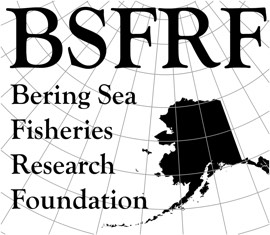Collaborative Pot Sampling
For the past two years, the BSFRF and crab industry has collaborated with NOAA Fisheries’ Alaska Fisheries Science Center and the Alaska Department of Fish and Game on an essential research project on Bristol Bay red king crab (BBRKC). Our goal is to map the late winter and early spring distribution of BBRKC, filling an important seasonal gap in data that will give scientists and managers insights into how best support this iconic fishery. This Collaborative Pot Sampling (CPS) research effort, a priority for the North Pacific Fishery Management Council (NPFMC), was initiated in 2023 and has now completed two years of sampling, with several more years planned.
These surveys are conducted in Bristol Bay, targeting areas where BBRKC are seen during the NMFS annual Eastern Bering Sea summer trawl survey, as well as important fishing areas for crabbers and other sectors.
FAQ
Q: Why are we doing this work?
A: We are seeking to better understand crab distribution during times of year where there is little available data and temporal overlap with important fisheries that may interact with crab.
Q: Who’s doing the work?
A: The BSFRF has taken the lead and shown that helpful research can be planned and executed quickly. We have substantial support from NOAA, ADFG, and the crab industry, and have used crabbing vessels as research platforms to conduct the work (if you want to learn how to get involved please email Scott Goodman).
Q: What are our methods?
A: In 2023 transects of small mesh pots were deployed in Bristol Bay, spaced 2nm apart oriented Noth to South in transect lines spaced 15nm apart. A total of 650 pots were sampled from two crabbing vessels. In 2024, this work was duplicated with the addition of a trawl vessel that sampled between the columns of pots using the Nephrops Trawl, a specially designed net towed at slow speeds to effectively capture crab. Trawl stations were spaced 10nm apart. Crab were measured, and biological metrics such as sex, carapace length, shell condition, and reproductive information (for females) was taken for every crab caught.
Q: Why pots?
A: While pot studies aren’t used often, it’s important to recognize that pot gear is what the fishery uses, and it has several advantages. Pots capture far more crab than trawl surveys, and our sampling design delivers a finer spatial resolution of distribution. Additionally, it provides opportunities for crabbing vessels to participate in important science in a time when fishing options have been limited.
Q: Why was trawling added?
A: CPS1 demonstrated that soft shell females exhibit pot shyness and sex ratios were skewed heavily male (75% or 2023 catches were male). One of our goals is to provide information on the spatial distribution of crab to managers and fishing vessels to avoid females are during a time when they are highly vulnerable due to molting and mating. Additionally, baited pots have an area of fishing which can be difficult to determine, and trawling provides a random grab of bottom, and a sampling area that is measured using acoustic sensors, and thus there is less uncertainty in area fished, AND the results can be more directly compared to the summer NMFS trawl survey.
Work so far:
Two years of sampling have been completed, with more on the way. Generally, surveys haven’t been conducted in the winter and spring due to the rough weather in the Eastern Bering Sea, but the BSFRF and collaborative partners have beat the odds and provided valuable data on BBRKC during this inclement time of year. It’s difficult to make inferences and provide useful information to managers with only two years of data, but when there is a time series of information, this information becomes invaluable to managers.
CPS1
CPS1 was a complete success for the first year of an important survey. Around ~10,000 BBRKC were caught. For an in-depth summary of CPS1 click here
CPS2
We have just completed our second year of sampling. This year was colder than last year, and vessels faced challenges with ice and rough weather. Not as many crab were caught (~6,000) and there is likely a strong temperature component. Analysis is underway and will be made available soon.
CPS in the news:


